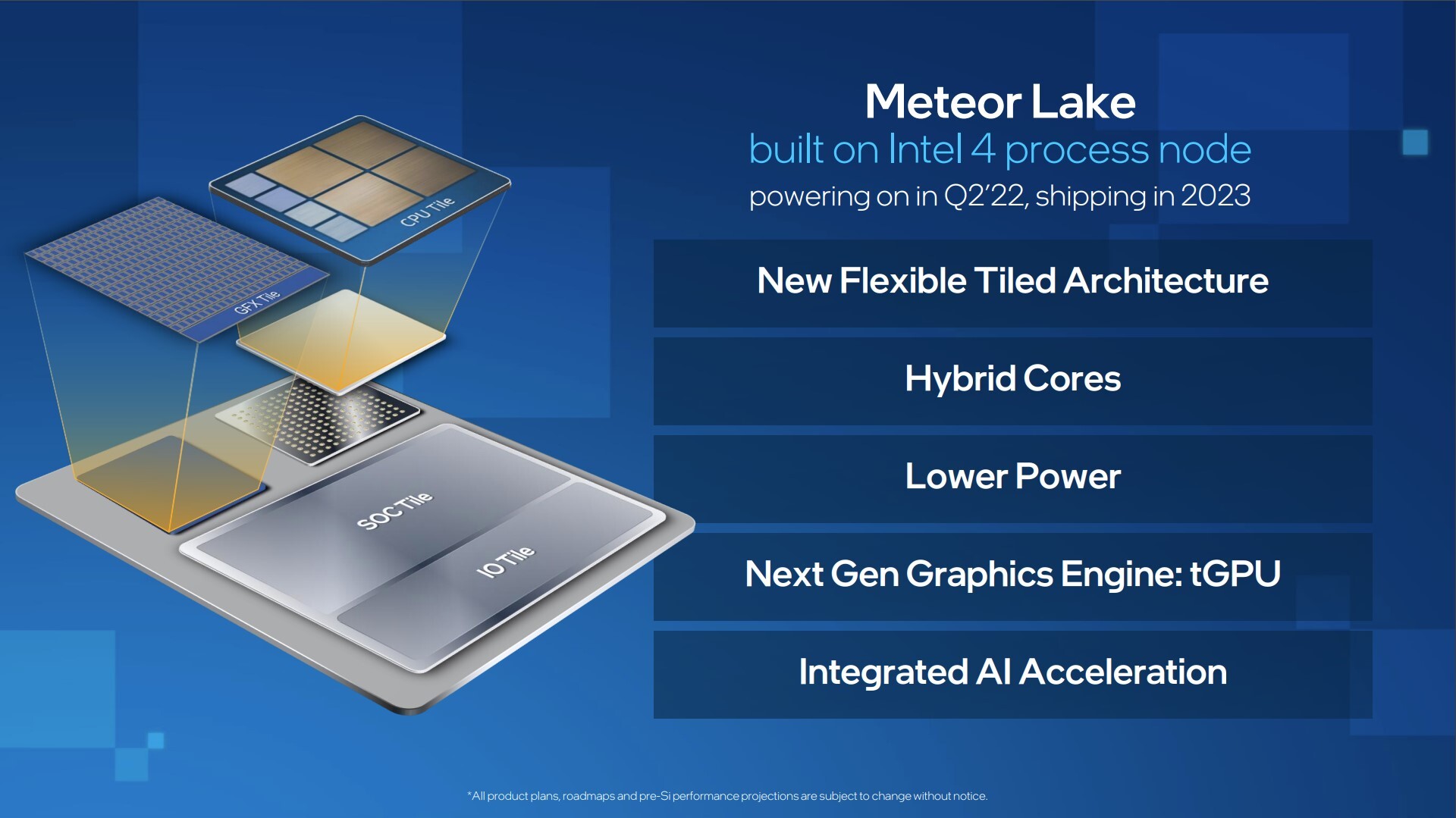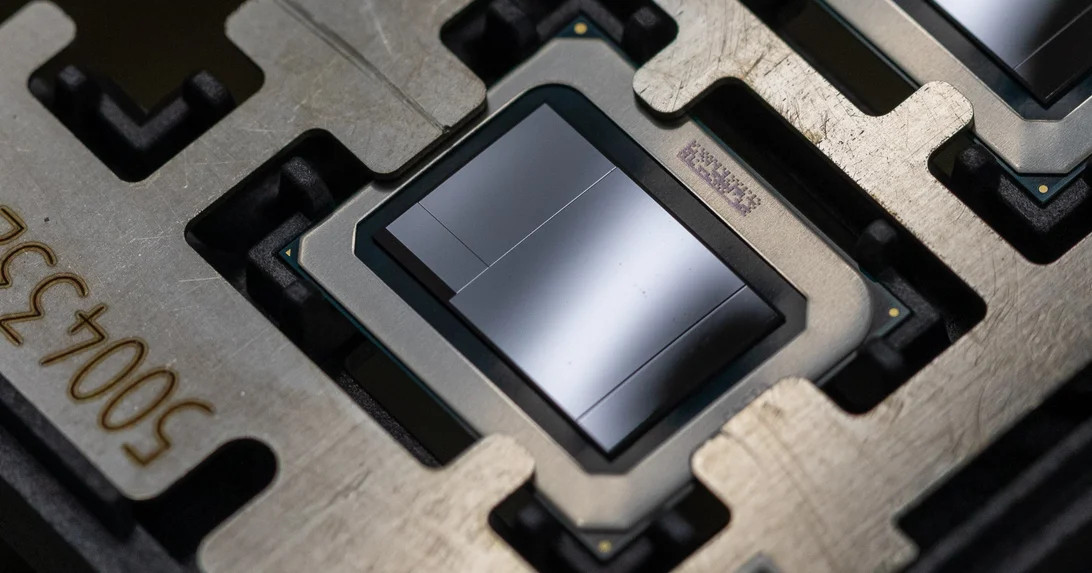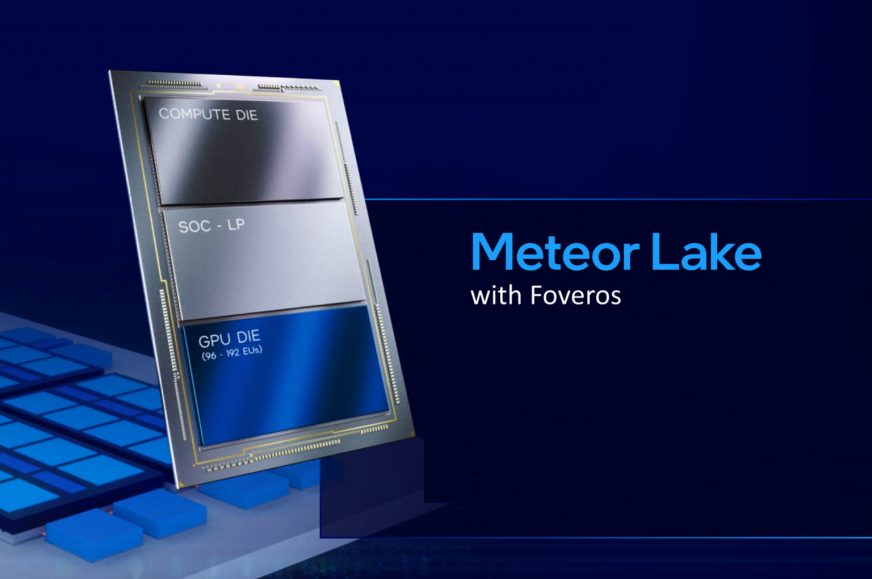Intel's 4nm processors already work well enough to run advanced OSes
Late last week, Intel released Q1 financial results. In addition to sales, profits and margins numbers (which were noteably down), the company also announced news more technical in nature. The company already has the first functional CPUs manufactured using the 4nm “Intel 4” node, the 14th generation Core “Meteor Lake” chiplet design processors. This means that these CPUs could come out sooner than expected.
On the occasion of the quarterly results, Intel highlighted that the first “disaggregated product” was successfully brought up and is running as of Q1. This term refers to a processor where the CPU cores, integrated graphics and IO functionality are present in separate chiplets, presumably using some advanced packaging technology to tie it all together. And the first processor that Intel refers to as such is Meteor Lake (technically it should probably be the Ponte Vecchio GPU that is pretty much this in design, but Intel probably means CPUs in this context).
Specifically, this running means that the bringup has progressed and samples of these processors are already in a functional enough state to successfully boot advanced operating systems – supposedly three of them – Windows, Linux and ChromeOS (which is, however, pretty close to classic desktop Linux, technically).
Intel CEO Pat Gelsinger commented that this milestone in getting Meteor Lake ready for commercial production has been reached fairly quickly and shows that the 4nm process is in good shape. After all, complex OSes require quite high level of hardware stability and fuctional correctness to complete booting. If they are successfully up and running, it doesn’t mean that the CPU, platform and firmware are fully functional, but they are well on their way to it. Freshly produced first samples of CPUs generally won’t successfully boot Windows or Linux right away and need significant firmware work and debugging.
However, Meteor Lake will not be made up just of 4nm silicon from Intel’s plants (which should contain the CPU cores), it also needs a separate piece of silicon that contains its “integrated” GPU, which is said to have up to 1536 shaders (192 EU), and this part should reportedly be manufactured using TSMC’s 3nm process. Furthermore, other separate chiplets should hopefully comprise the SoC (presumably this part takes over the functionality of the integrated chipset, which has been separate until now) and I/O die.

So Intel’s work is complicated by the fact that it is not enough to get just one silicon die ready, but the final processor has to wait for all of them. Intel announced that it had taped-out (or as Intel says, taped-in) the CPU die silicon itself, as early as last spring. Yet fabless companies often have a product on the market within 12–15 months of tape-out.
- More: Intel has shown images of future processors including 4nm Meteor Lake. It has stacked 3D chiplets
- More: What processors is Intel preparing? Arrow Lake and Lunar Lake confirmed for 2024-2025, 20A and 18A process
- More: Intel reveals Meteor Lake processors: special CPU and GPU chiplets, graphics have up to 1536 shaders
Will Meteor Lake come out sooner than expected?
As we mentioned in the intro, Meteor Lake processors aren’t exactly close to launch, Intel will release them as the 14th generation, while we’re still waiting for the 13th. So first there will be still 7nm-using Raptor Lake processors coming out that will be marketed as 13th gen Core and will provide more E-Cores and also probably higher IPC and large P-Core frequencies. It’s possible that Intel only put this generation on the roadmap when they assessed that Meteor Lake on the 4nm process (it was previously designated as 7nm) would not be ready in time.
If Intel were to keep the one-year cadence, Raptor Lake for desktop would come out this fall (that’s probably pretty much true, but it could even be a bit earlier, maybe as early as September) and for laptops in Q1 of 2023. Then if the Meteor Lake generation were to come out a year later after that, that would put it in Q4, or the end of Q3 2023. Intel officially states that this 4nm/14th Core generation will come out in 2023. But that could only be the date of the desktop launch again, with us then waiting again until the first half of 2024 for laptop models.
But the fact that the samples are already in a fairly functional state this early before the supposed release dates makes it tempting to wonder if Intel could have hastened the arrival of this new generation and, in turn, shortened Raptor Lake’s product cycle a bit – similar to how the shelf life of Rocket Lake desktop processors was only half a year before Alder Lake came out (though they continued to sell after their successor was released of course). Perhaps we will see these new products with better performance – and especially better power efficiency – sooner. Maybe laptops in fall of next year and desktops a little earlier, perhaps in the first half of 2023.

However, that is under the assumption that Intel hasn’t hit a case where the architecture is ready, but its release is waiting for the production process to mature – then the fact that the tape-in and bringup have been achieved so long in advance would not really mean anything. This happened with the Ice Lake processors, which had been functional in sample form for a really long time before their release, but Intel still couldn’t get the 10nm process to achieve the necessary frequencies and also yields. The release of that new CPU generation was thus blocked by the issues troubling the manufacturing process.
The fact that tape-in and capability of running higher operating systems on Meteor Lake took place so early before the expected release could theoretically have a similar explanation. That is, the processors would have been ready for an earlier release (and would have been able to take the place of the “fill-in” Raptor Lake architecture), but Intel has to wait until it can achieve higher clock speeds and passable yields on 4nm process node.
Sources: Intel, VideoCardz
English translation and edit by Jozef Dudáš, original text by Jan Olšan, editor for Cnews.cz
⠀








